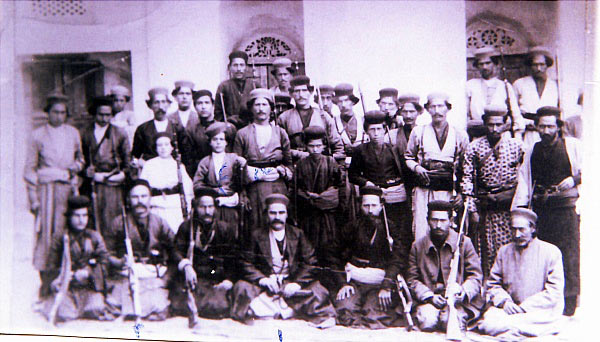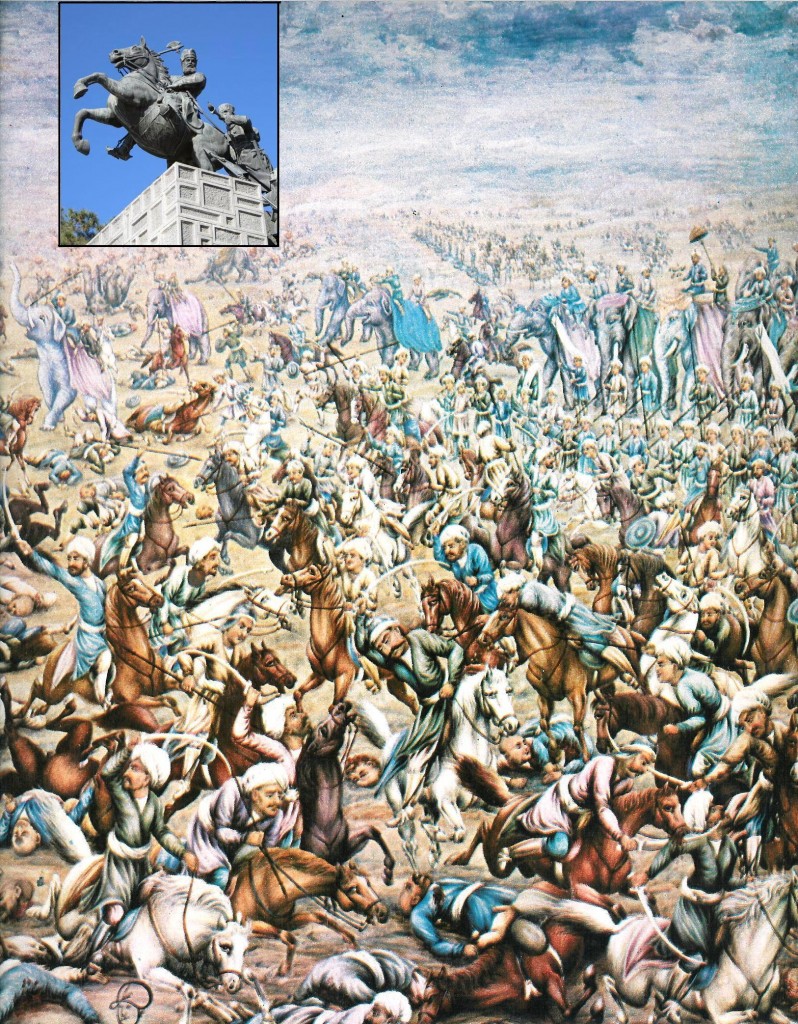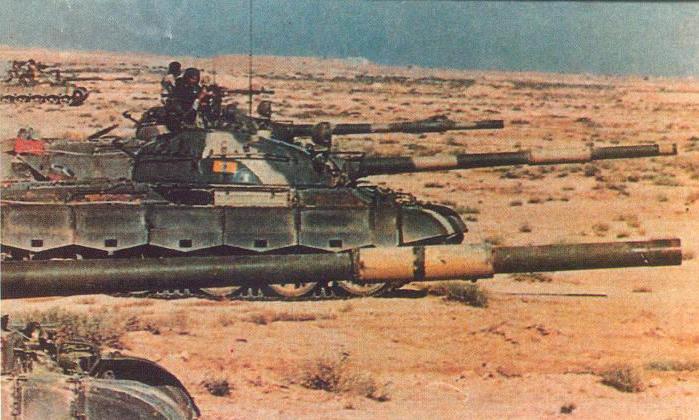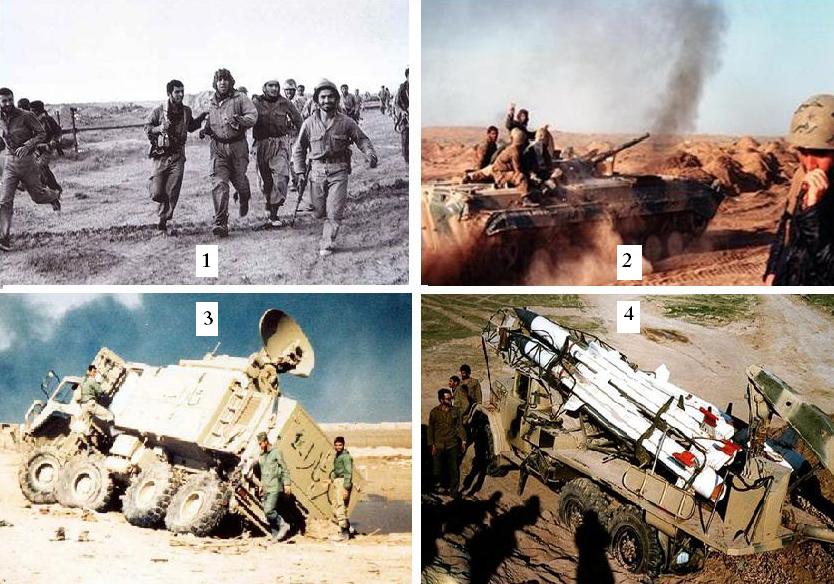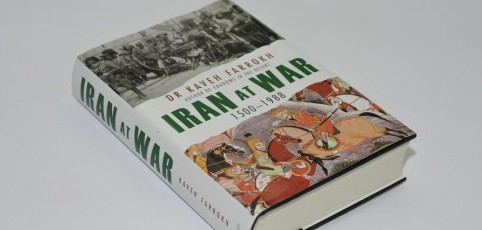Robert Terpstra has written a review for Iran at War: 1500-1988 in The Business Daily Egypt (dated September 12, 2011). That review has been reproduced for reference below – the version printed below also features pictures and captions not originally displayed in Robert Terpstra’s review.
Farrokh has been interviewed twice on TV and six times on radio for Iran at War: 1500-1988-book has also been cited by the Wall Street Journal…
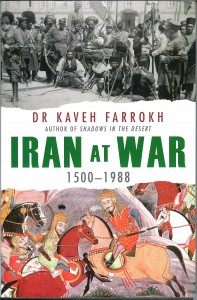
Iran at War: 1500-1988. Osprey Hardcover 480 pages, released May 24, 2011 • ISBN: 978-1-84603-491-6. Contact: John Tintera, Marketing Director @ 718/433-4402, [email protected], To order consult Chapters-Indigo or Amazon.
==========================================================================
Robert Terpstra of the Business Today reviews Iran at War (Sept. 12, 2011)
Documenting nearly five centuries of history is no small feat, and Kaveh Farrokh does it well in Iran at War: 1500–1988. Maybe not quite at the reading level of the titans of the seminal authors of history in Toynbee and Gibbon, but Farrokh is still able to hold his own even if it mimics Gibbon is in his incredibly uncanny gift for storytelling and the often laborious, but detailed account of key figures and dates on history’s battle grounds.
What is refreshing, however, is that the book discusses the Islamic Republic of Iran without painstakingly rehashing the Islamic Revolution, which appears in just about every book on the country. This is apparent when one visits the country, as I did in 2010. When traveling to Rasht in the north, as well as Tehran, Khorramshahr, Isfahan and Mashhad…a country obsessed with the past …And Farrokh truly takes advantage of this by writing this narrative.
-دلیران تنگستان در کنار رئیس علی دلواری -The warriors of Tangestan in the early 20th century. These proved to be highly resilient and determined fighters and often fought hard against imperial British troops inside Iran, especially in 1856 and during World War One (picture forwarded to Kavehfarrokh.com by Parviz Khoupai).
As the title rightly indicates, the subject matter is simply that: war. And through six separate, yet interrelated, chapters, Farrokh interweaves his way through the Safavid Dynasty, the rise of Nader Khan in the mid-18th century, the all-important Qajar Dynasty that ruled until the close of World War I before Reza Khan and his son, Mohammad Reza Pahlavi…the downfall of the shah …return of Ayatollah Khomeini; and the rest is history.
The strongest chapter indeed is Farrokh’s last, one dealing with the Iran-Iraq war, a bitter feud that lasted from 1980 to 1988, causing millions of casualties on both sides. It was also a war that the US and other regional powers did not want to see succeed on both sides. Other than the much-publicized Anfal campaign or the Halabja massacre in 1988 — chemical warfare directed toward the Kurdish minority and one of the crimes against which Saddam Hussein was tried — not much is known about the Iran-Iraq war. Farrokh helped change that. The final section ‘catastrophic destruction with no winners’ really tells all. With brief forays into each other’s territories, not a great deal of land was confiscated… Pan-Arabism and Persophobia graduate from hate literatuire to violence: T-62 tanks of the Iraqi 6th Armored Division cross the border into Iran on 1400hrs September 22, 1980. Saddam Hussein and the Baath party of Iraq were convinced that as their tanks rolled into Khuzestan, they would be greeted as liberators by the Iranian Arabs. This may partly explain why the Iraqis miscalculated in the first days of their invasion by not allowing more infantry to accompany their rapid-moving armor in Khuzestan (see Iran at War: 1500-1988, 2001, pp.344-355). Instead of being hailed as liberators, Saddam Hussein’s forces were greeted with bitter opposition by the Iranians (including Khuzestani Arabs) whose dogged resistance assisted the overall Iranian effort at slowing down the Iraqi advance (Photo Source: www.Acig.org). The author states that one of the reasons for the warfare seemed to be centered around a Persian pan-Islamism belief versus a Baathist ideology in Saddam’s Iraq. The Battle for Khuzestan appears to be the most important, a strategically located province on the tip of the Persian Gulf. Even though Iraq had several other shipping avenues…the Fao offensives and battle over the Arvand Rud/Shatt al Arab waterway really were telling stages of the war. For Iran, the control of three strategic islands where the bulk of oil and shipping cargo traveled was a priority, to posit a great understatement. With an almost month-by-month and sometimes daily account, Farrokh’s incredibly detailed description of the Iran-Iraq war rivals any accounts of modern-day warfare history that this reviewer has lay witness to. The enemy of my enemy is my friend – and then my enemy. Video of Donald Rumsfeld (Special envy of President Ronald Reagan in 1983) shaking hands with President Saddam Hussein on December 20, 1983. Rumsfeld was then to be one of the most vociferous advocates of removing Saddam by force in 2003. What is telling, and what the author illustrates as an important part of his research, is the detailing of the territorial boundaries of the state — in 1772 stretching from Ghazni in modern day eastern Afghanistan west to Diyarbakir in modern day Kurdistan or Turkey proper. The empire reached as far north as the North Caucasus as well as encapsulating both the Tigris and Euphrates rivers in present-day Iraq. Several maps throughout the book illustrate the growth and significant receding landmass of Iran. Presently, more than 200 years after the 18th century Afghan invasions, Iran still presents itself as an imposing state and a necessary inclusion in all conversations in negotiating mention of the volatile Middle East. Some scenes from the Iran-Iraq war (1980-198): [1] Demoralized Iraqi army tank crew surrenders during the Iranian liberation of Khorranshahr in May 1982 (Picture Source: Military Photos) [2] Ex-Iraqi BMP armored personnel carriers being used by the Iranians against their former owners (Picture Source: Shahed) [3] A captured Iraqi French-made ROLAND low-altitude anti-aircraft missile system at Fao in February 1986 (Picture source: Military Photos) [4] Iranian troops transport captured Iraqi SAM missiles in the aftermath of the expulsion of occupying Iraqi forces from Khuzestan in May-June 1982 (Picture source: Military Photos). The book is a must for the progression of modern day and historical Iranian scholasticism. At 480 pages, absorbing the book over time is best — a book that’s content contains such detail demands and deserves it.

